Magnetic Screen Doors
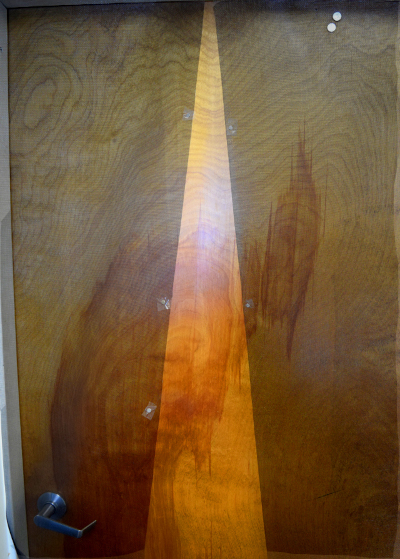
Most of our blog articles stem from questions we get from our customers. This month, we'll take a look at how to make a walkthrough, magnetically closing door. This DIY project seems to be pretty popular among homeowners and campers alike. Sure, they sell products like this online already, but what fun is that?
What magnets should you use for this sort of thing...long block magnets, diametric discs, or long cylinders? We didn't know the best answer, so we made a few prototypes to see which magnet might be best!
It's still cold here in Pennsylvania, but our thoughts are on warmer weather!
Closing style #1: Overlapping flaps
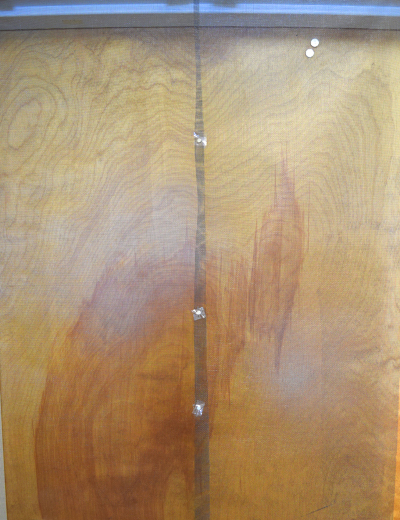
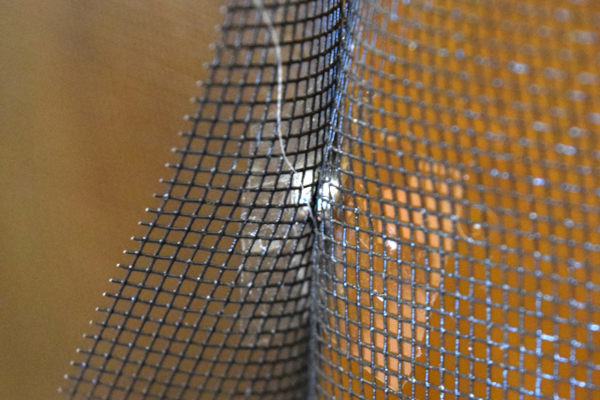
This kind of closure mimics something like a button-up shirt. You have two flaps that overlap when they close. In this case, the magnets will have to be pulled/pushed straight away from each other, like Pull Force Case 3. Our magnet calculator can estimate the pull force of two attracting magnets over a gap, the gap being the fabric thickness in this case, but what kind of force "feels" best?
There is a fine balance between being strong enough to create a good closure, yet weak enough that people can easily walk through the door. The magnets also need to be strong enough to attract to each other across some distance, or else there won't be a good, tight closure **mosquito's enter the chat**.
We first tested this method using screen material. We started off using a D61 disc, but quickly found that they were too strong. Next, we tried some smaller D31 magnets. This gave a nice feel, but these magnets are so small that they don't easily attract back to each other once the flaps are separated. The SWP-S also gave a good feel, but again, had trouble "finding" each other.
Through testing this method, we realized that something like this would probably be best for a door that won't be walked through all the time. Perhaps you want to magnetically close up a tent-door for the night, so it doesn't need to close itself behind you. Wherever you might use zippers or buttons, these options could be a good replacement.
Closing style #2: Flaps connected edge to edge
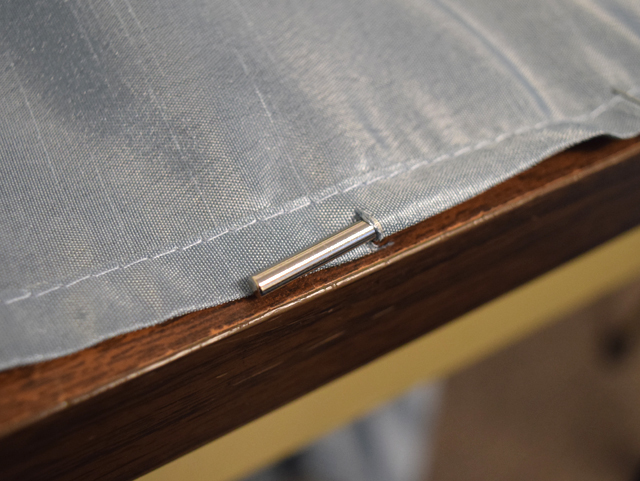
This closure mimics those magnetic screen doors you see on the market. The edges of two flaps connect and close behind you after you walk through the doorway. Out of the two options, this one is probably the more popular question we receive.
Our first thought was, Diametric magnets, of course! These magnets have the poles thru the diameter, so the strength is on the sides of the cylinder, rather than the flat faces. We tested out some D48DIA with some thicker, felt-like fabric - they were too strong! It would be tough to walk through door curtains lined with D48DIA magnets.
Next, we tested some longer, axially magnetized cylinder magnets, attracting side-to-side. We tried both the D4Y0 and D3Y0 with the same, felt-like fabric. They both gave a pretty good feel, though we liked the D3Y0 a bit better. We also tried some BX022 blocks, which provided a nice feel as well.
The tricky thing here is that you have to pay attention to the orientation of the magnets. Magnets across from each other need to be oriented opposite of each other. For example, on one curtain, you might install the magnets with the north pole facing up. On the other flap, the magnets would all have the north pole facing down. It might be worth using a pole identifier to help with this.
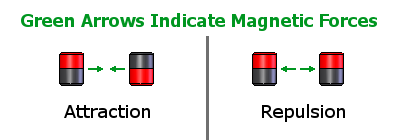
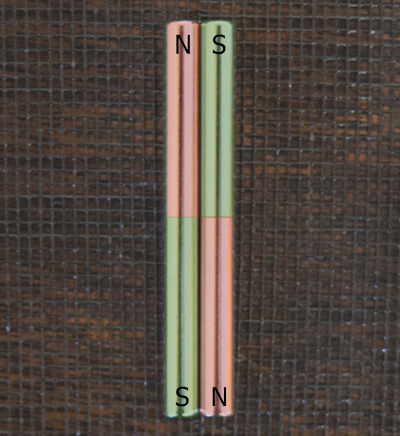
Better prototype!
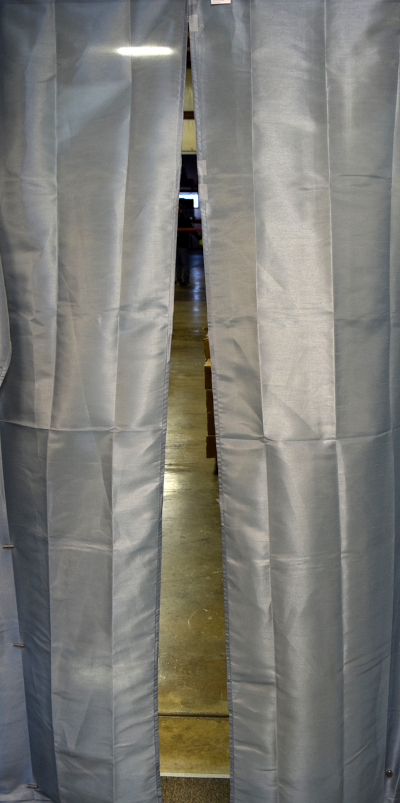
Taking what we found in our small scale testing, we're ready to make a larger prototype! Watch the short video below to see our "finished" products.
For thinner material, we like the way some D2Y0 or D3Y0 feel, attracting side to side. However, these magnets are lightweight, so the flaps didn't always close back together on their own. We had to add some steel washers to help weigh the flaps down.
If the material allows air to pass through, like a screen, the D2Y0 or D3Y0 might be good options to try. If you have a solid curtain, these magnets have a good "feel", but you'll need to add some weight to keep the curtain from opening in a breeze.
For thicker material, you might need something like the D4Y0, attracting side by side, but again, you might have to add weight to the bottom.
Quick technical note: Side by side pull force
What's the side-by-side pull force between two axially magnetized magnets? We get this question a lot, but it's hard to figure out. Our calculator assumes magnets are attracting pole face to pole face. For example, two D3Y0 have a pull force of 2.29 lb, when their poles are directly attracting. But what about when they are side by side, like in our application?
We did some quick testing with the magnets used in this article and found that the side-by-side pull force was only about 20-30% of the listed pull force.
That means if two D3Y0 were directly attracting side-by-side, it might only take around 0.5 lb to pull them apart. This number would be less if there were material between the magnets.
Final thoughts
Most of the products you see online attach to the doorway using Velcro...but what if you have a steel doorframe? You could use magnets to attach the whole thing to the frame, but they'd need to be stronger than the magnets in the curtains. Some of our Plastic/Rubber Coated magnets could be good. They are easy to grab onto, durable and waterproof. Several D84PC-BLK, DC6PC-BLK or B888PC-BLK, spaced along the edges should do a nice job.
In regards to making a magnetic screen door, the material thickness really matters. All of the material we used was relatively thin, but thicker material might require stronger magnets. We were also surprised by how a slight breeze affected how well the curtains closed. If you are using a solid fabric, be sure to add some kind of weight to keep them from blowing around!
Good luck with your project and be sure to send us pictures of your setup!
